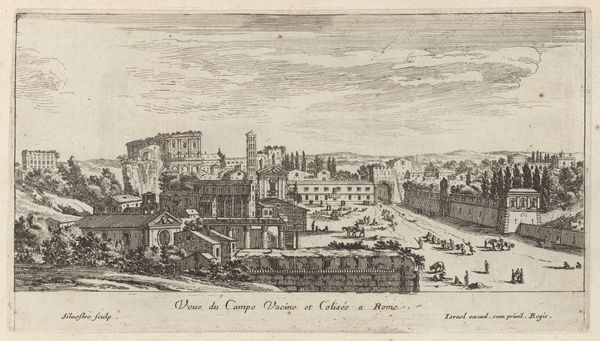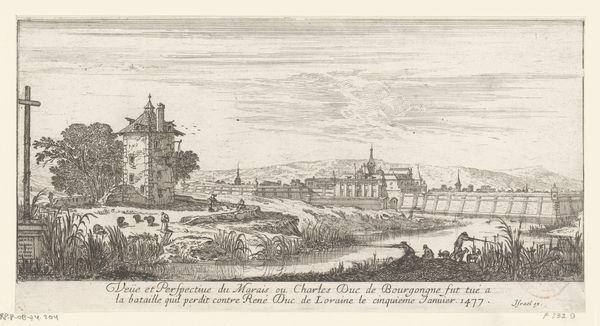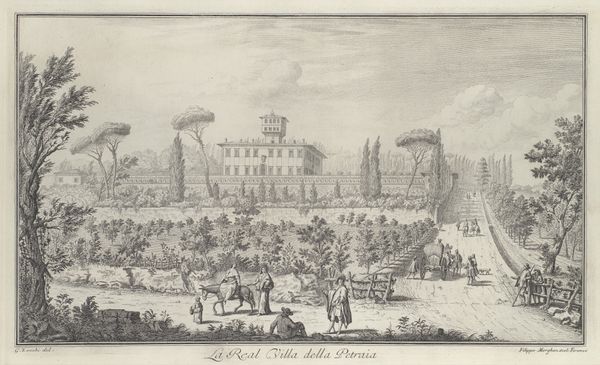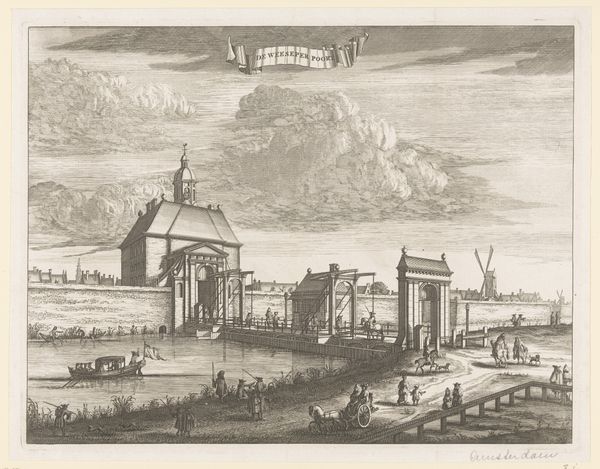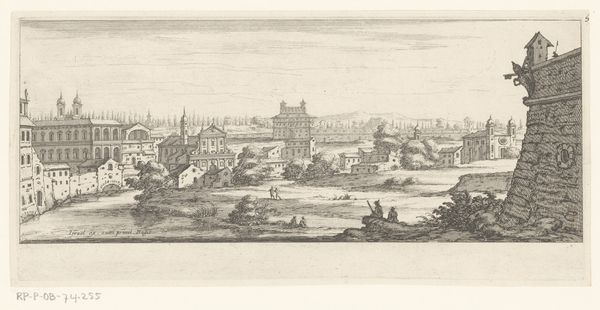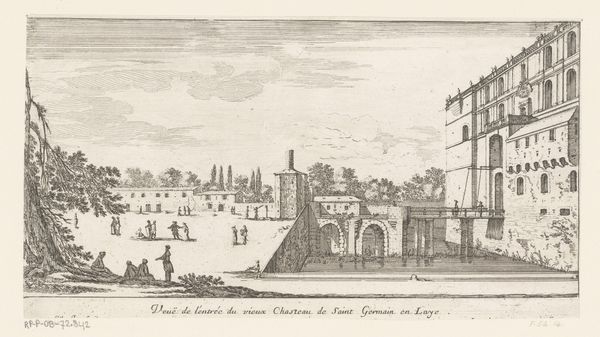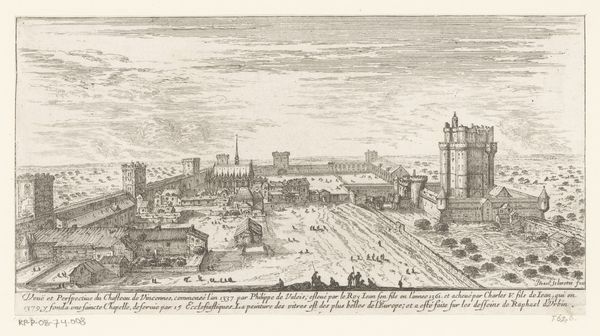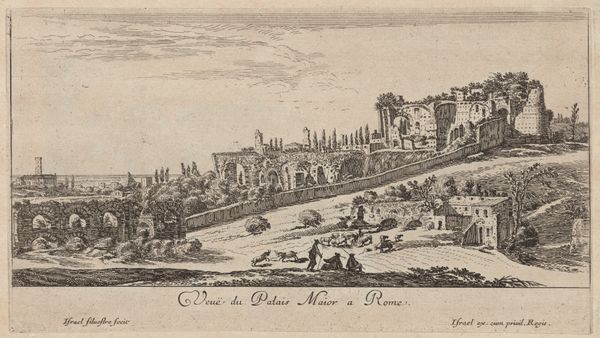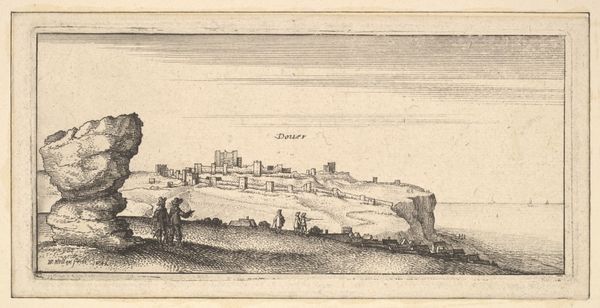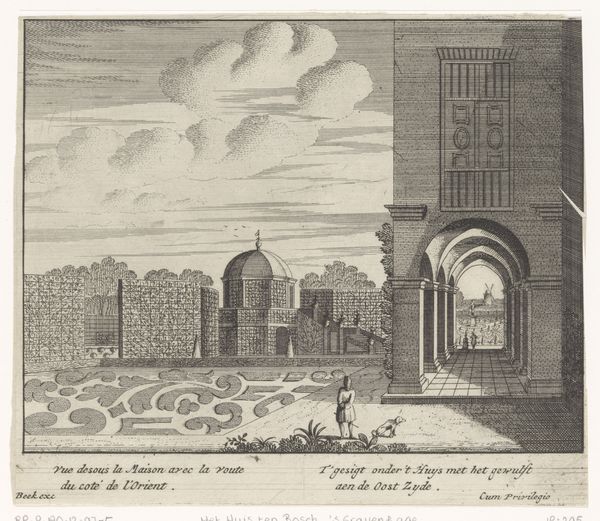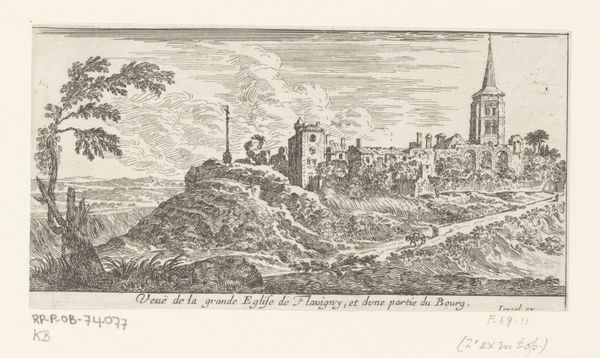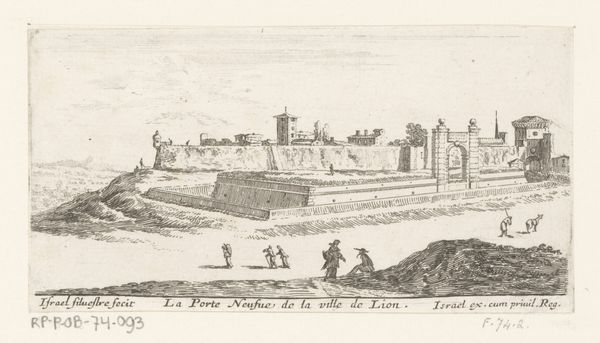
print, engraving
#
baroque
# print
#
landscape
#
cityscape
#
engraving
Dimensions: plate: 5.9 × 11.5 cm (2 5/16 × 4 1/2 in.) sheet: 21.1 × 33 cm (8 5/16 × 13 in.)
Copyright: National Gallery of Art: CC0 1.0
Curator: Israel Silvestre's "Veüe du Campo Vacine," dating from between 1640 and 1660, offers a striking vista of the Roman Forum in the Baroque style. Created as an engraving, it captures a moment frozen in time. Editor: My immediate impression is one of melancholy elegance. The crumbling ruins, depicted with such precise detail, create a sense of layered time, a past grandeur gently succumbing to the present. The light is almost theatrical, highlighting the textures. Curator: Indeed, that contrast—the solid forms of the ruins juxtaposed with the delicate lines of the engraving—contributes significantly to its enduring power. Look how the artist employs classical ruins: each stone and fragmented column whispers stories of a lost empire, evoking the ephemeral nature of human glory. The Forum serves as a visual reminder of the cyclical nature of civilizations. Editor: And the composition reinforces that idea. Silvestre uses the decaying architecture in the foreground to frame the cityscape in the background, guiding the eye deeper into the historical landscape. This almost forces you to consider Rome, not only as the eternal city, but also as a locus of constant transition and architectural stratification. Curator: Absolutely. There's also a potent symbolism in choosing the Forum as the subject. It was once the heart of Roman political and social life, filled with voices, commerce, and civic rituals. In its ruinous state, it reflects themes of power, memory, and transformation. The two small figures hint at a modern presence encountering that historical depth. Editor: Agreed. It's intriguing how Silvestre balances the stark linearity of the ruins with the delicate rendering of the sky, which seems almost turbulent. That tension creates a fascinating visual and emotional dynamic. This isn't merely a topographical view; it's a commentary on permanence versus decay. Curator: The image becomes a stage where history is forever reenacted in the minds of observers. It's fascinating how the engraving itself—a reproducible medium—ensures the continuity of this cultural memory. Editor: I see it now too, the technical brilliance and historical weight combine, making "Veüe du Campo Vacine" more than just a scenic view.
Comments
No comments
Be the first to comment and join the conversation on the ultimate creative platform.
